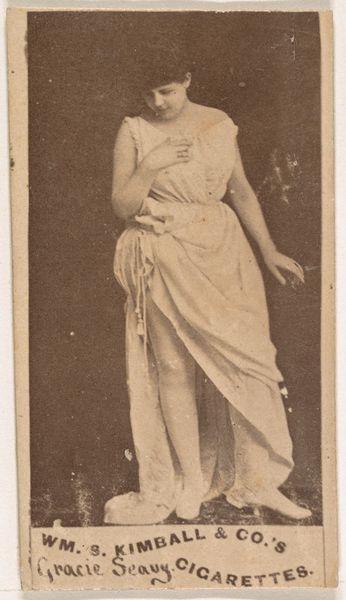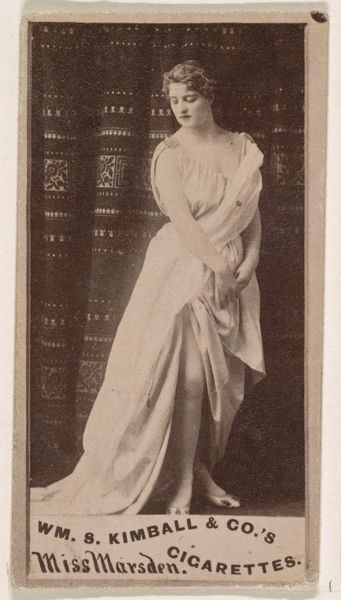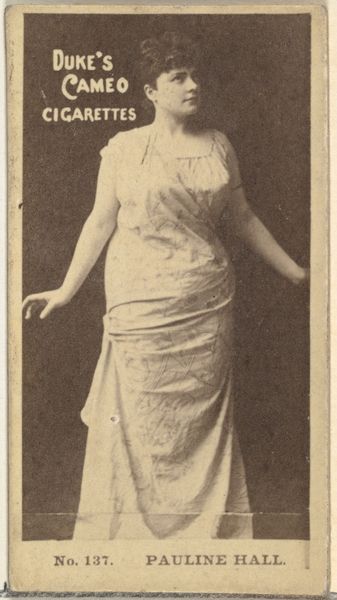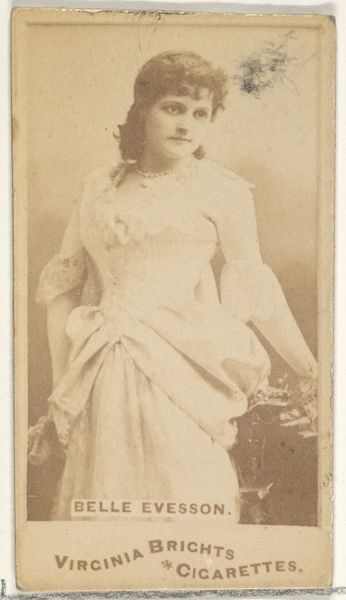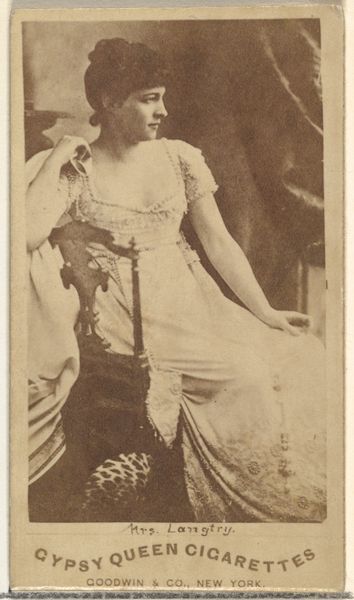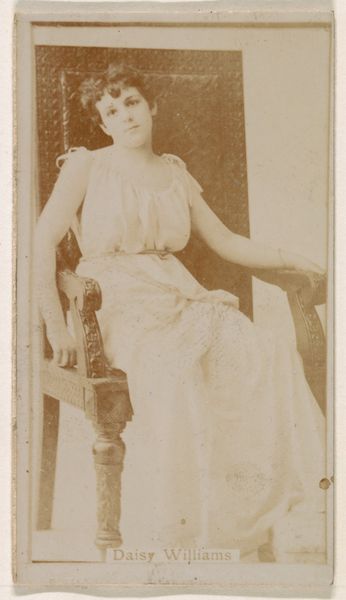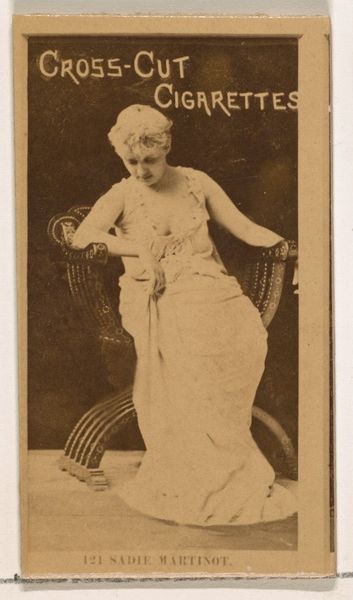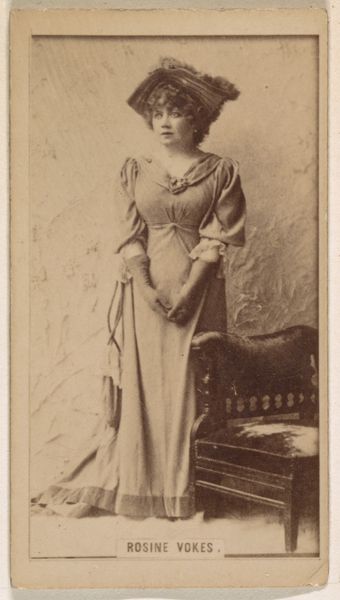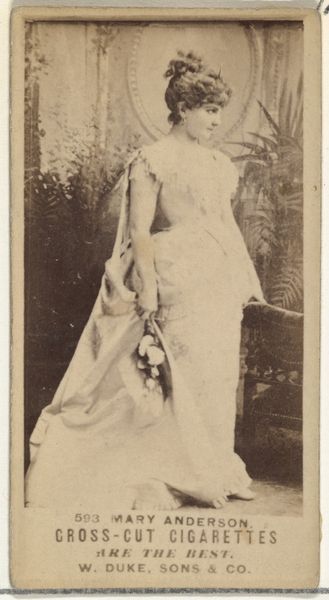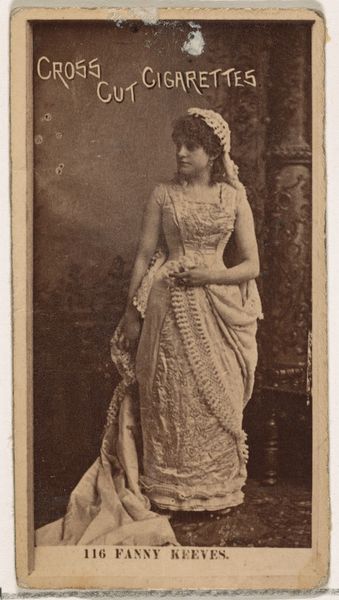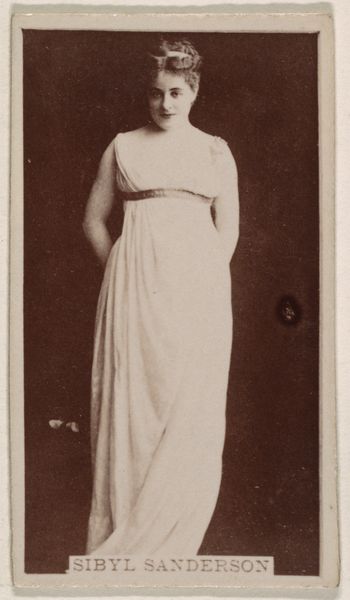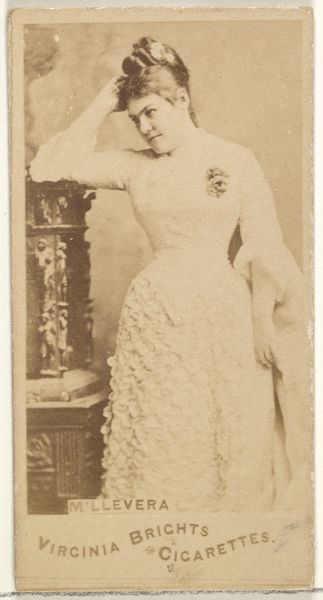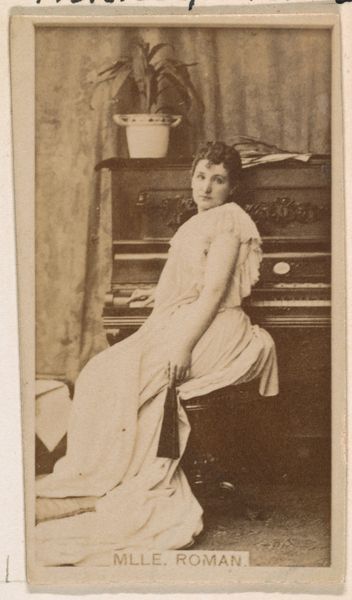
Card Number 26, Sadie Martinot, from the Actors and Actresses series (N145-4) issued by Duke Sons & Co. to promote Cameo Cigarettes 1880s
0:00
0:00
drawing, print, photography, collotype
#
portrait
#
drawing
# print
#
photography
#
collotype
#
19th century
Dimensions: Sheet: 2 11/16 × 1 3/8 in. (6.8 × 3.5 cm)
Copyright: Public Domain
Editor: This is "Card Number 26, Sadie Martinot," a collotype print from the 1880s by W. Duke, Sons & Co. It feels very poised, almost theatrical, but what strikes me most is the tonal range achieved in the collotype—the gradations from deep brown to off-white are beautiful. How do you read this portrait from a formalist perspective? Curator: Certainly. One could immediately point to the interesting contrasts in texture—the smooth dress versus the ornate, almost gothic chair. The dress flows, yes, but in controlled vertical lines that mimic and contrast the linear design of the chair. Semiotically, we might read the actress as literally supported and framed by convention, but this doesn't hold because the image works very much against depth. Editor: How so? Curator: Observe how the background lacks any discernible spatial indicators. There’s only a flat, indeterminate darkness, which flattens the picture plane overall. It pushes Martinot forward and focuses the attention on surface, line, and the tonal shifts within a very narrow range of color. Notice how her features are comparatively indistinct, less sharply defined than the textual elements announcing the cigarette brand at the top. Is that contrast meaningful, do you think? Editor: Perhaps it reflects the commercial purpose of the card itself. It seems the portrait is meant to primarily attract attention, so sharp detail is traded for this flattening effect to draw in the viewer. I hadn't considered that. Curator: Exactly. Ultimately, the “portrait” functions as a highly stylized advertisement. We can focus our appreciation on its design and manufacture – how those formal decisions serve this particular purpose. The relationship of the actress's presentation with that commercial purpose creates visual interest and invites critical thought about the role of surface appearance in commodification.
Comments
No comments
Be the first to comment and join the conversation on the ultimate creative platform.
